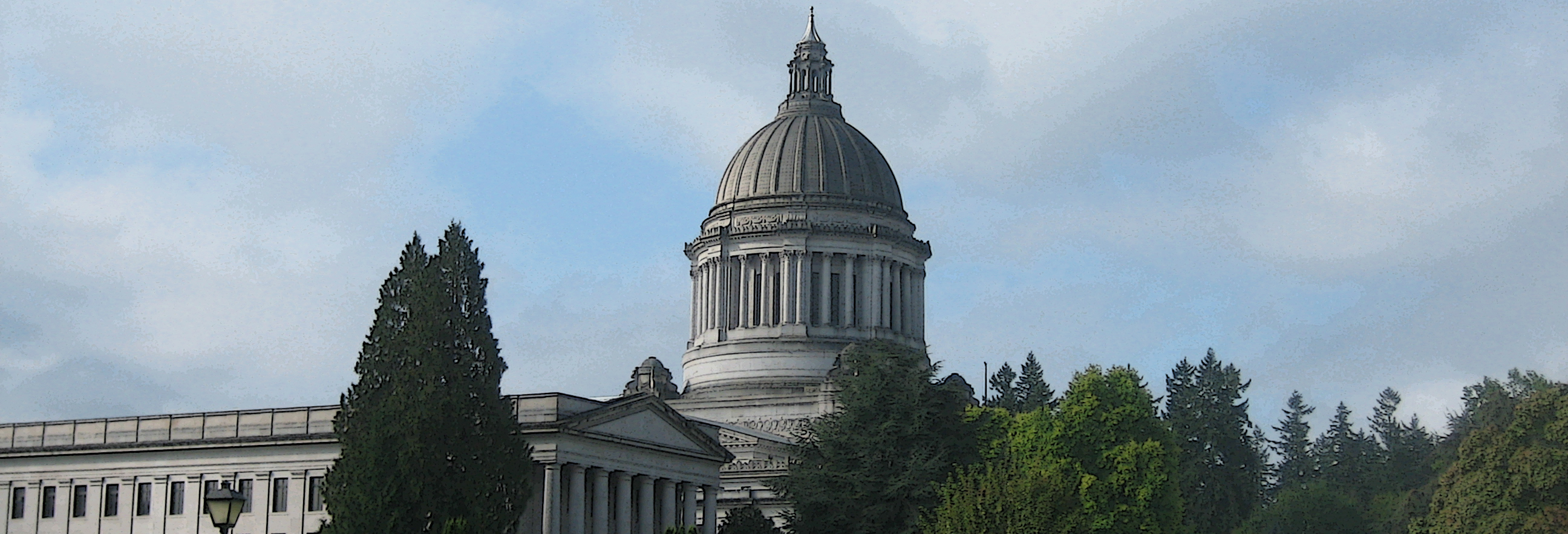
This is part 1 of a special blog series on transportation issues in the Puget Sound Region. These issues are under consideration by the Transportation Futures Task Force, a group of stakeholders convened to recommend solutions to ease our transportation woes and better support transportation options. Transportation Choices’ Director of Programs, Shefali Ranganathan is a member of this task force.
PART 1: 2015 PSRC Transportation Public Opinion Poll – Key Findings
Written by an all-star TCC Volunteer
The results are in: Transportation in the Puget Sound Region is a pressing and urgent matter that needs to be addressed this legislative session.
A recent poll conducted by the Puget Sound Regional Council (PSRC) to gauge public opinion toward transportation policy, found that while a majority of the respondents polled are optimistic that the region is generally headed in the right direction, they also feel that our transportation system is falling behind our needs.
The poll (1) found that 79% of the respondents believe that traffic is a serious or critical problem. Additionally, 60% of respondents also rated the availability of transportation alternatives as serious or critical problem. Across the region; 47% of respondents rated the condition of our transportation infrastructure and the state of increasing congestion as the foremost pressing concern (prioritized above other key concerns like taxes, the economy, environment, education).
The poll indicates a lack of consensus on the top need for the transportation system in the Puget Sound Region.
While there’s overall agreement on the big picture need for improvements in transportation, what investments and how we fund them is still largely up for debate.
Looking at the Central Puget Sound Region as a whole, 27% of respondents prioritized improved traffic flow and 22% prioritized providing more alternatives to driving (including transit, sidewalks and bikeways) as the highest objective across the region overall. However significant differences in priorities exist by geography: For example, within King County, the East and South regions favor improved traffic flow as the highest transportation objective, while the Seattle/Shoreline sub area identified increasing investments in transit, bike and pedestrian infrastructure as a high priority.
What about funding?
While voters identified transportation as a top issue, opinions on how to fund it were mixed. A tax on big polluters was popular but respondents were divided on other funding options including gas tax increases, car tab fees, and tolls. Overall, Seattle and Shoreline respondents showed the strongest support on most funding proposals. Additionally, respondents showed support for raising local revenue; with 57% agreeing or strongly agreeing that the Legislature should give local communities options to raise revenue – good news for Sound Transit and Community Transit who are seeking new local options to support transit this Legislative session.
The urgent need for transportation investments
Puget Sound residents are feeling the strain of the region’s inadequate transportation investments. New PSRC and other national studies have shown that between 2010 and 2014 delays increased on the regions freeways by 52%, with I-5 from Fife to Everett and I-405 from Lynnwood to Tukwila showing the most significant increases at 92% and 94% respectively.
This congestion has affected both general and HOV lanes, with HOV lanes on both I-5 and I-405 experiencing significant increases in travel times in 2014. These delays have resulted in longer travel and wait times and less reliability for transit routes, with King County Metro being late 15% more often in 2014 than 2013, and Community Transit I-5 routes being late 25% of the time in 2014.
Despite these added delays and a 6.5% decrease in service hours, transit ridership showed an 11% increase in annual boardings. Furthermore, in 2014, Sound Transit’s ridership increased by 8% over 2013, a rate of growth that is more than four times that of transit ridership nationally. Looking forward, the continued growth of the percentages of Puget Sound residents who use transit should be leveraged to free up capacity on our strained freeways.
It is clear that voters want to see increased urgency to address the region’s transportation woes. As the State Legislature negotiates a transportation package that includes Sound Transit 3 local authority, a revenue option for Community (Snohomish) and Intercity (Olympia) Transit as well as state support for transit investments, the question remains – will they give Puget Sound residents transportation solutions that they desperately need or will they fail to act?
If you would like to keep track of the transportation package currently being considered in the Legislature, follow our Dispatch from Olympia blog series that give you the most up to date information on all things transportation in Olympia.
(1) January 27 and February 4, 2015 the PSRC conducted 15-minute phone interviews of 1500 voters in King, Pierce, Snohomish, and Kitsap County to gauge the current climate of public opinion toward transportation policy. The objectives of the survey were to gather regional input, identify priority issues, explore trade-offs, and assess public opinion on financing mechanisms.




